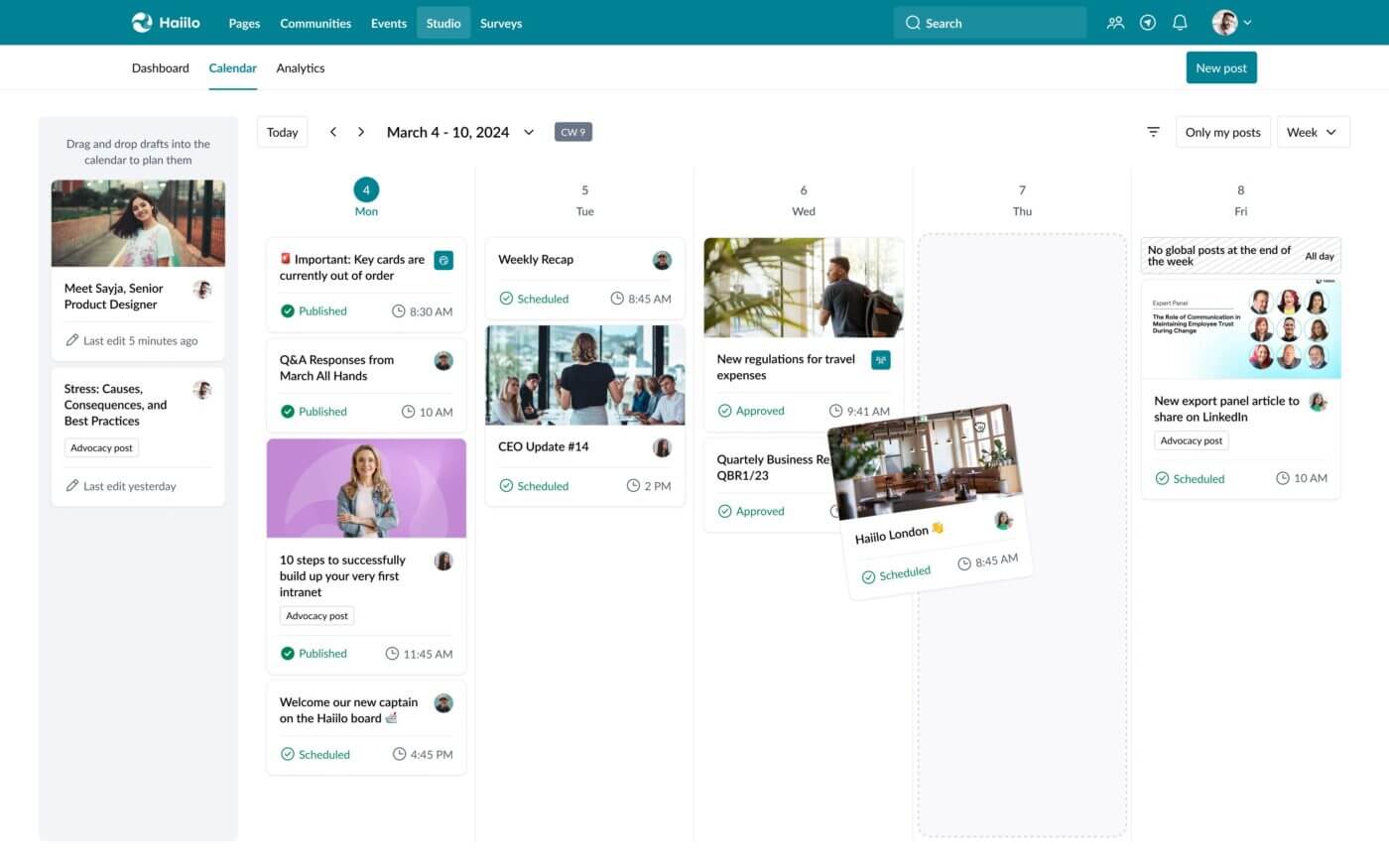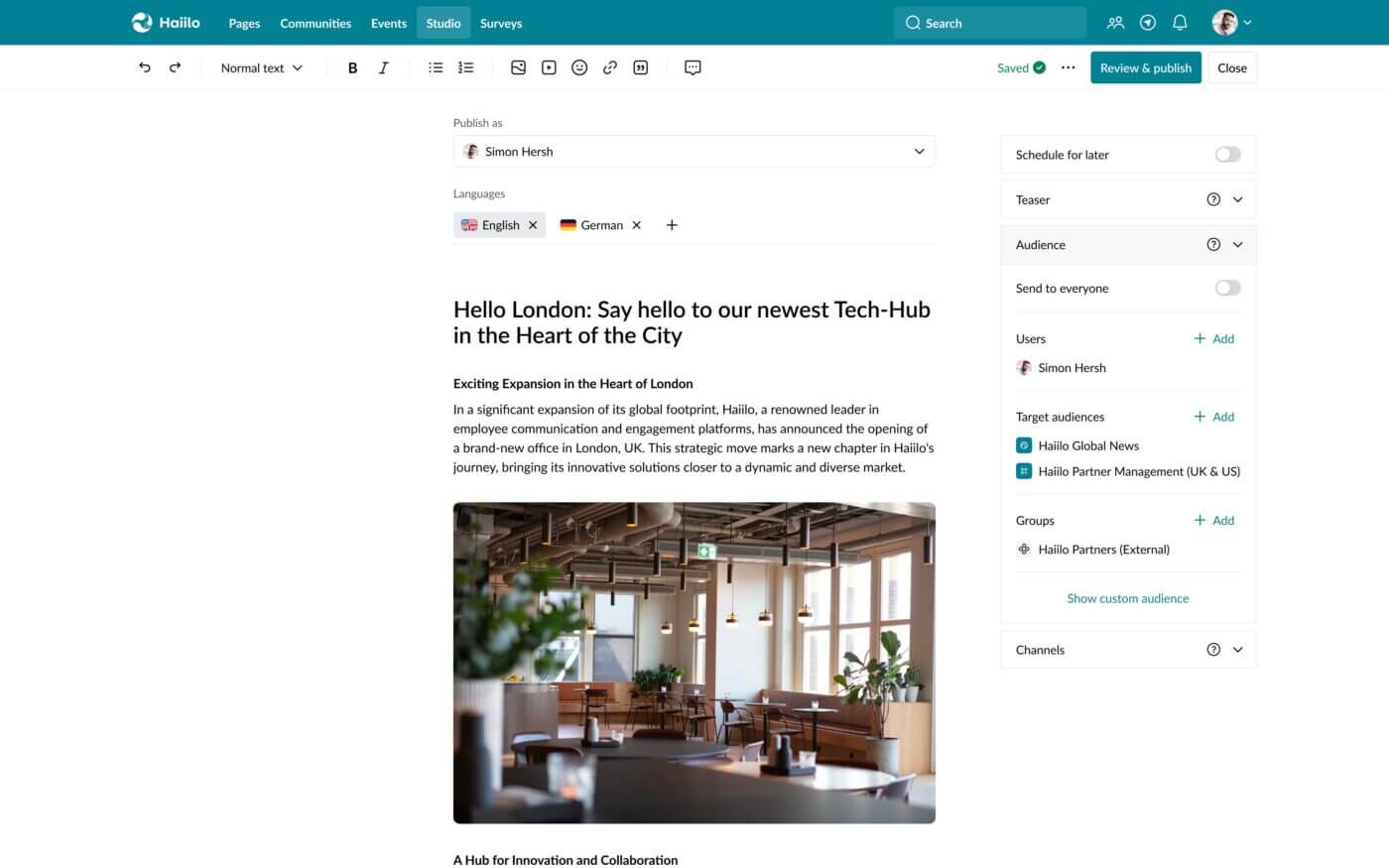Internal storytelling is important for improving the overall internal communications strategy. It can help you make your employees feel more connected, engaged, and aligned with the overall business strategy.
However, proper internal storytelling requires good planning and strategy to support it. It requires leadership buy-in and participation from different stakeholders.
In marketing, storytelling has been used for decades now. Why? Because storytelling increases the value of products by up to 2,706%.
Because of this power of storytelling, more and more employers have started thinking about how to incorporate it into their internal marketing and communications strategies.
In this blog, we will define internal storytelling, explain its benefits, and cover the steps for implementing it in your organization.
What Is Internal Storytelling
Storytelling is a communication strategy that uses facts and narrative to connect the reader and the story on an emotional level.

By incorporating storytelling into your internal communications strategy you can achieve that your employees are not only connecting to your content in an easy-for-them-to-digest way, but you’re also ensuring that they connect to it on an emotional level and relate to it more.
The main goals of internal storytelling are to:
- build compelling narratives to increase employee engagement
- capture employees’ attention and build empathy
- help employees visualize what they are trying to covey and
- understand how they are, or can become, the heroes of the stories.
This, according to Donald Miller’s Building a Story Brand bestseller, is incredibly important because every person on the planet wakes up every morning self-identifying as a hero, and organizations that try to convince them otherwise are destined to lose.
Learn how Haiilo can help you with internal storytelling!
The Benefits of Internal Storytelling
An article by the International Association of Business Communicators has pointed out how storytelling in organizations is meant to build trust, support shared purpose, define and reinforce company or corporate values, define and illustrate positive corporate culture, and build employer and market brands.
1. Connected workplace
One of the major reasons for low employee engagement, motivation, and morale is the lack of sense of purpose and the feeling of being disconnected from the work they do and the peers they work with.
Unfortunately, this happened quite often – Workforce Institute found 46% of those surveyed felt disconnected from their company.

With a clear, emotive, and compelling narrative, you can help employees better connect with the company’s purpose and relate to your organization’s core values. Such stories can drive employees to join the conversations and connect with peers who share common values and interests.
2. Engaged employees
85% of employees are most motivated when internal communications are effective. But, it can be tough to get through to people and cut through the noise especially if your communications are irrelevant and monotonous.
Internal storytelling can go a long way in capturing and holding employees’ attention and boosting engagement with all the internal communications initiatives. So make sure the way you communicate makes them sit up and take notice. Make it relevant to them.
Furthermore, with storytelling, you can more successfully show the impact of employees’ work on the overall business success. Employees knowing their purpose is essential to engagement and buy-in, and you can help employees understand the part they play through storytelling.
📹 Check out our Masterclass: Strategies for Driving Employee Engagement in the Workplace
3. Organizational alignment
77% of executives say that they don’t focus on aligning employees’ goals with corporate purposes. The main reason behind this is that they are unsure about how to do it.
If you use storytelling in your organizational alignment initiatives, you could make your content more audience-focused and match employees’ own stories with the organization’s mission and vision.
In essence, storytelling empowers employers to align employees with the business way of thinking. This helps internal communicators to be more in line with what employees will actually engage with.
4. Change management
Employees’ buy-in is critical for driving successful change within organizations, and storytelling is a great way to pursue employees and get their trust. Mergers and acquisitions, implementation of new systems, or changing ways of doing things require people at the heart of it.
You can show employees how their role can drive change and revolutionize the business. This can help you stay on track with deliverables with a workforce that is eager to be part of the change.
5. Information retention
In the world of information overload, it can be hard for employees to memorize important company updates, news, facts, and other critical information essential for their jobs.
Storytelling helps employees remember things better and boost information retention.
According to Womens’ Leadership:
When people think of advocating for their ideas, they think of convincing arguments based on data, facts, and figures. However, studies show that if you share a story, people are often more likely to be persuaded.
6. Employer brand
Internal storytelling can also help you improve your employer brand which can enable you to attract the right candidates to your organization.
Good employer branding stories usually talk about your company’s culture, employees’ work experiences, corporate and social responsibility, and similar topics relevant to your target candidates.
When great stories are created internally, employees will likely share them externally as well, boosting your visibility as an employer and ability to hire new talent.
How to Improve Your Internal Comms Strategy with Storytelling
So how can you use storytelling to improve your overall internal communications strategy?
Let’s dig deeper!
1. Follow the rules for creating a great story
Great storytellers usually have great interpersonal skills and communication skills. However, the best storytellers are those who follow the rules for creating a great story.
Pixar’s storytelling rules are probably the most famous rules ever put together, but here is an overview of Indeed’s simple-to-follow guide for creating great stories:
- Follow a clear structure
- Ensure the audience can relate
- Feature likable characters
- Appeal to an audience’s emotions
- Include surprises
- Include the necessary information
- Use your own experiences
- Highlight challenges and how to overcome them
- Tell a story with a purpose
- Show action in your story
2. Plan your stories in advance
Storytelling requires good planning, consistency, and frequency. If, for example, your goal is to align your employees with your organization’s core values and embed new behaviors based on those values, make sure that you plan for a few content pieces around this topic.
Ensure that everyone involved has visibility over your content calendar and is able to contribute to the project.
IC professionals love Haiilo’s calendar because of its simplicity, modern interface, and features and functions to automate certain activities!

3. Make stories relevant to the target audience
In a study of more than 300 communications and HR professionals––71% said employees don’t read or engage with company emails or content, and one of the major reasons is lack of personalization and relevancy.
If you want to engage employees with your stories, make them relevant to them!
Ideally, your company’s intranet should enable you to curate and publish content in one place and make it highly relevant through dynamic audience targeting.
4. Use the right tools and channels
In marketing, around 12 touches are needed for a lead to convert. Furthermore, research suggests that we need to see information between five to seven times for it to transition from short-term to long-term memory. This is why we see marketers target their audiences on various different channels.
Hence, multichannel communications should be used in your internal storytelling strategy as well. Make sure that you understand your employees’s preferred communications channels, and deliver the stories on your company’s intranet, Slack, MS Teams, emails, SMS, and other channels.
5. Experiment with different content types
There are many different ways to tell stories.
Try different content types to understand what your audience prefers. Plain text and images are usually not enough to drive higher engagement with the content.
Instead, test with video, internal company podcasts, live webinars, infographics, GIFs, interactive quizzes, surveys, polls, and internal company newsletters.
6. Incorporate visuals and beautiful designs
Design and visuals are crucial for creating memorable stories. Unfortunately, internal comms professionals are often stuck with outdated or non-user-friendly technologies that don’t allow them to easily create beautiful content.
With Haiilo, IC professionals can create beautiful content pieces in minutes, collaborate with other team members, automatically translate to other messages, and distribute to multiple channels at once!

7. Engage your employees
Even though company or brand-generated content is sometimes necessary, employee-generated stories have much better engagement and readership. When brainstorming for new internal content ideas, make sure to involve your employees and encourage them to become content creators and ambassadors for your company.
A 2022 State of User-Generated Content revealed that 52% of communications and HR teams already use employee-generated content (EGC).
8. Create stories faster with generative AI
According to research, bloggers who use AI spend about 30% less time writing a blog post, and AI trend is also becoming popular among internal comms professionals.
For example, Haiilo leverages generative AI to help internal communicators create content much faster. Regardless of your intranet content idea, AI can help you get started so that you don’t have to create your stories from scratch.
You can ensure all your text is in line with your company’s style and tone and you can simplify and change tonality within a moment.
Last but not least, with AI you can summarize your texts to make them shorter and more appealing to your readers.
📹 Take a look at why the dilemma of the blank page is no longer a thing thanks to Haiilo AVA with which internal communicators create content 10x faster!










